NFTs
What’s the Future of Art in the Metaverse? Two Leading Voices in the Emerging Crypto-Art Field Lay Out Their Visions
Sydney Xiong is with the APENFT Foundation, while Ben Nolan is founder of Cryptovoxels, an art-focused online universe.
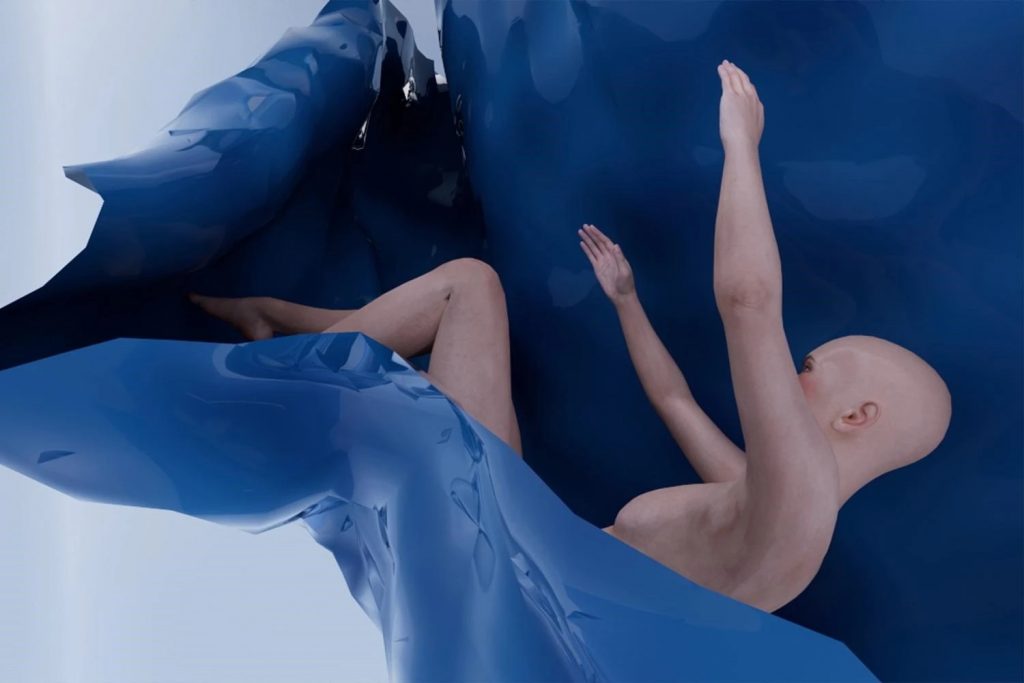
Sydney Xiong is with the APENFT Foundation, while Ben Nolan is founder of Cryptovoxels, an art-focused online universe.

Artnet NFT in Partnership With APENFT Foundation

Whether you’ve just heard of the metaverse or you’ve already built an enviable NFT collection, the question of what the IRL art world’s role in the metaverse will look like in the years to come is on many art lovers’ minds. Though the wild world of NFTs can make it hard to know which direction to look, some significant players are already shaping that future.
Among them is Sydney Xiong, director of APENFT Foundation, which unites art and finance in the metaverse, and Ben Nolan, the founder of Cryptovoxels, a virtual world powered by the Ethereum blockchain, which is home to many art, music, and cultural events. Earlier this year, APENFT hosted the open-call NFT exhibition “Second Lives” on Cryptovoxels, which included big-name NFT artists like Beeple, Fewocious, and Pak alongside rising talents. The works were auctioned on LiveArt, after which APENFT’s Art Dream Fund distributed $100,000 between 13 of the emerging artists picked for the call.
Recently, we spoke with both Xiong and Nolan about NFTs going mainstream and what they find most exciting about art in the metaverse.
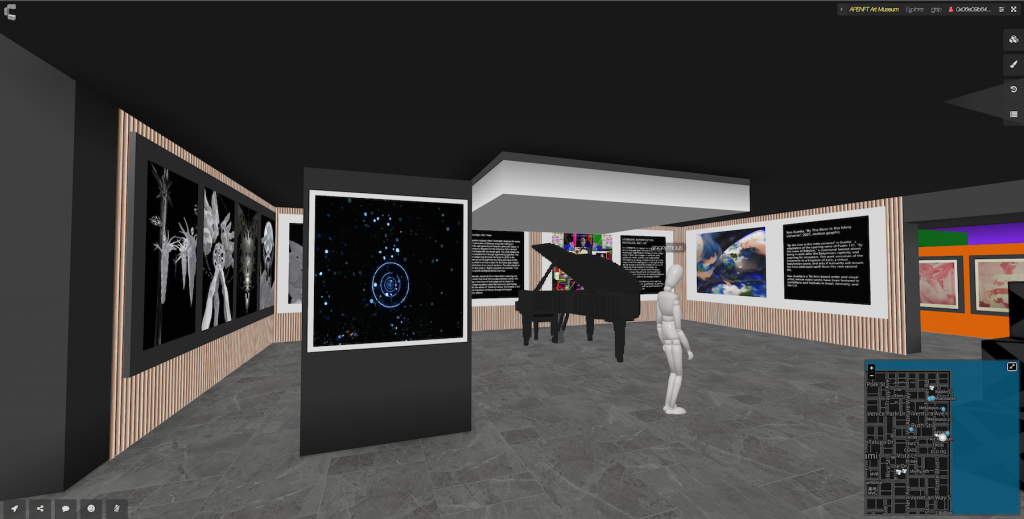
The exhibition “Second Lives” on Cryptovoxels. Courtesy of the APENFT Foundation.
Earlier this year, the APENFT Foundation opened “Second Life,” an open call exhibition of NFTs at the APENFT ART MUSEUM in Cryptovoxels. Can you tell me more about this exhibition, particularly the theme of the show?
Sydney: All the artists in the exhibition are united by their use of digital media in exploring regions of alternative realities in the metaverse. The theme of the open call, “Second Life,” was actually inspired by a game that allows people to create an avatar for themselves and have a second life in an online virtual world. The artists we selected for the exhibition showed a range of creative visions inspired by the idea of a second life. Some are visions of a space-age future, some are biological, others were more playful. I was struck by the creative and energetic ideas that artists hold for the future.
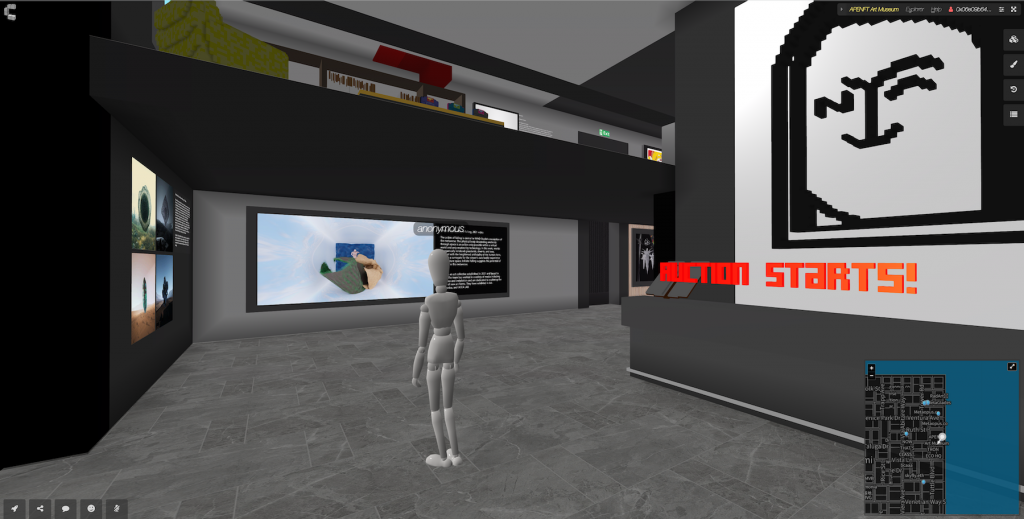
The exhibition “Second Lives” on Cryptovoxels. Courtesy of the APENFT Foundation.
Tell us about some of the winners of the open call. Who are the NFT artists we should get on our radar?
Sydney: The open call went well really well. We received more than 500 submissions. Some came from professional artists. Others were art students and some came from creators who work in other fields like design, music, and marketing. These artists use a range of mediums, from traditional mediums like copper plate photography to GIFs and digital animation. It was so much fun to talk to them individually and get to know about their process and the ideas behind each work.
As for the winning artists, WMD Studios, an art collective established in 2021 and based in Berlin, is remarkable. The team has worked in a variety of mediums, including VR, video, and installation, and is dedicated to exploring the future of many other new art forms.
I’d also recommend the artist Lil E who presented the work Revelation 2077 as well as the artist Jansword Zhu, an artist and art historian interested in exploring new material, and whose work is very organic and illuminating.
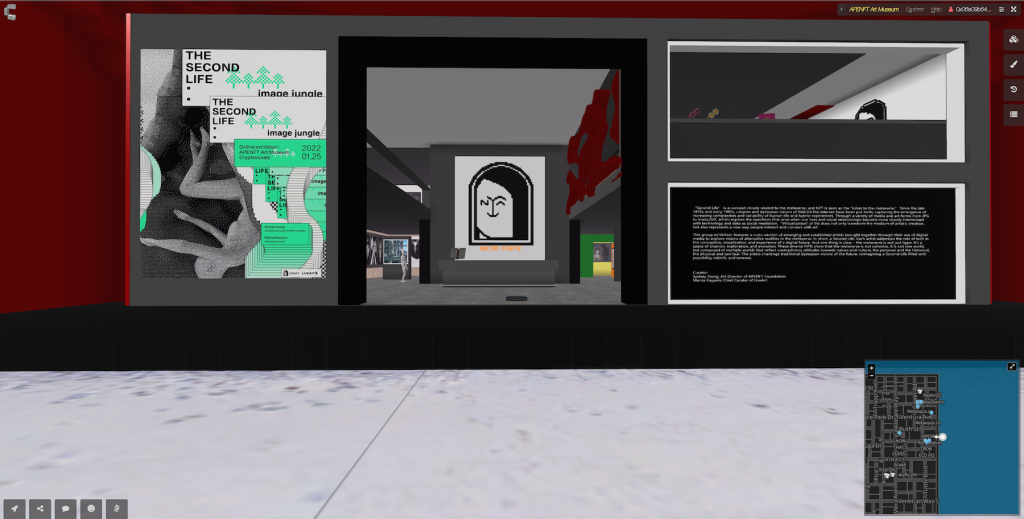
The exhibition “Second Lives” on Cryptovoxels. Courtesy of the APENFT Foundation.
Why did you decide to host the exhibition on Cryptovoxels?
Sydney: We actually planned out a physical exhibition in Shanghai, which had to be canceled the day before the opening due to the Covid. The postponement of this physical exhibition forced us to think of an alternative option, as in-person exhibitions became very difficult at that moment.
Our APENFT Art Museum in Cryptovoxels was the best option we could think of as it’s all online and easier to coordinate in this uncertain period of time while creating a very unique and really fun virtual experience. From my perspective, it’s the perfect venue to see digital art—as all the works in the show were JPEGs, GIFS, moving graphics, et cetera.
In exploring Cryptovoxels, I was struck by the number of art galleries, museum spaces, and musical events taking place. How did that happen? Was it a conscious decision to cater to a cultural sphere or did it happen organically?
Ben: I don’t know how we did it! We started out as a really technical blockchain and we ended up with this little group of artists doing NFTs really early in 2018. One morning someone asked me if they could add support to display their NFTs in a gallery kind of setting.
I really like gallery aesthetics, with tall white walls and nice lighting and shadows. Early on that was an easy thing to target graphically. And then when people came with these huge numbers of NFTs—we were already in the Ethereum ecosystem, it was quite straightforward to display those NFTs in the world.
Then we were able to do gallery openings through Covid so that you could get together with 10 or 20 people to show a new collection, back when the NFT scene was totally tiny and no one knew of us. It worked really well. And so then I thought—galleries are awesome. We get a great distribution of creators, too. We have lots of women and men and people of different ages, different backgrounds. We really lean into it as something that we seem to do well.
I believe in a network of metaverses—not just one metaverse, but different metaverses for different purposes. There can be one that’s really good for playing shooter games, one that’s really good for visiting art galleries, and one that’s really good for listening to music, for instance. Cryptovoxels has ended up in the space of galleries and musical events and I love being in that space. It’s fantastic.
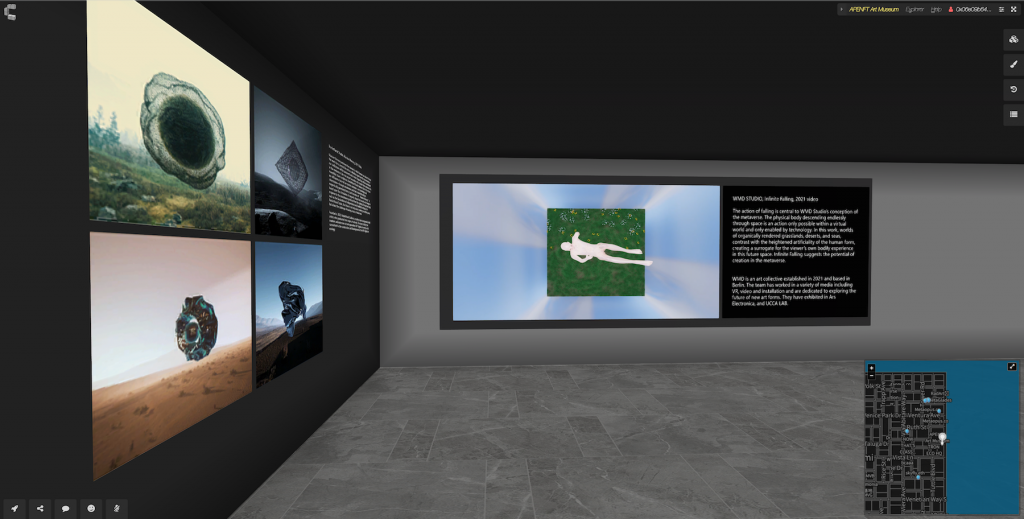
The exhibition “Second Lives” on Cryptovoxels. Courtesy of the APENFT Foundation.
For someone who is just learning about the metaverse, I enjoyed that with Cryptovoxles, I didn’t have to register for anything and could just start exploring. “Barriers to entry” is an idea we talk about a lot in the art world. I wonder if this is something you each consider in terms of the metaverse?
Sydney: In the future, everyone will have a crypto wallet. There’s not going to be a huge barrier or problem for people to log in to explore Cryptovoxels or to use OpenSea to buy NFTs. People will get really used to the digital parallel universe.
There are so many more things you can achieve in the virtual world than in the real world—there are no limitations in terms of shape or the forms of the buildings or what you would consider putting in museums or galleries. I am very much enjoying how people can work together collaboratively. I’ve heard of many projects in which multiple artists and designers are working together, building and designing. It facilitates this interdisciplinary dialogue that intrigues me.
Ben: I agree with Syndey that the barrier is going to diminish in the future. But we intentionally made Cryptovoxels so that when you arrive you’re instantly in the world. There’s no logging in. There’s no selecting your character. There are no instructions. You start to explore a physical space and realize, “I can look around, I can walk, oh, there’s art. I can look at these other people here. I can talk to them.” We really didn’t want there to be any limits on people accessing it. We have it so that it will work on any kind of device—that means it looks like a 15-year-old game because we try to use the simplest technology.
For instance, now there are a number of events where you have to have a certain NFT for entrance—well, that’s sure to happen, but I wanted to create a world for people to explore and for it to be full of things. In a lot of these virtual worlds, you get put into a character that immediately asks, “are you a woman or a man?” We didn’t want to do that. Everyone just gets a default avatar with a neutral walking stance, so I don’t know if it’s men or women at these events, unless someone actively decides to declare their identity. Everyone just exists.
The metaverse is still very much taking shape. What are the principles underlying each of your projects that are guiding you as you move forward?
Ben: User sovereignty and people owning their art, owning what they create, owning what they collect. Also, welcoming everyone and excluding no one. We really want to respect people’s privacy and data. Right now, we’ve got ways of funding the ongoing growth and development of Cryptovoxels without having to track people and monetizing every aspect of it. That’s quite important to me. I want to provide our services cheaply so that we can provide them to lots of people for free and everyone who can’t buy in to be in crypto can still participate and build and create and do all these things. And then the people that do have more resources can contribute to the funding of the world and build value for themselves that they will capture and hold.
Sydney: I totally agree. It’s about maintaining privacy and being able to own your own content and make money from it. As a foundation, we have invested in many NFT projects recently—more than 30 in the past six months. Apart from just incubating and supporting crypto native artists, we have invested in a lot of NFT projects focused on making the ecosystem bigger, really trying to get traditional or Web 2 people onto our website.
What do you see as the future of the traditional art world and the metaverse?
Sydney: Our foundation is really trying to be the bridge between the traditional art world and the so-called metaverse or future online world. I definitely believe that these two worlds are merging. Digitalization and the digital presence of exhibitions will be more prevalent in the future, as it gives access to a much wider audience, and there are no limitations on what artists can create.
Actually in April we are curating an offline exhibition again, and hopefully we can get it done this time! The exhibition is divided structurally into two parts—one part composed of artists’ works and then an enclosed LED wall space where we’ll have a Cryptovoxels exhibition that runs in conjunction with the offline exhibition. I really think that it will be super cool—and I’ll be able to share more important in the following weeks.
What do you see as the major advantages of NFTs?
Sydney: The difference for artists is very obvious. In a traditional gallery, you divide your revenue 50/50. Here, it’s just your own profits and you get the royalty revenue every time a transaction is made on the work.
Ben: It’s also more fluid. If I buy some art off of Sydney’s wall she’s got to take it off the wall, crate it, and sent it to New Zealand. Then it will take two weeks to get to me. Or I can buy that artwork instantly and have it in my wallet in a couple of seconds. Then, I can have somewhere to safely and easily store it, as long as your keys are safe. There are downsides, such as the carbon, but those problems can and are being solved.
What do you say to NFT skeptics?
Ben: I don’t mind that so many people hate on NFTs, cause I think it gives us more time to build an amazing ecosystem in this space before everyone realizes this is actually a fantastic way to go forward. We don’t want to run on the Ethereum main net using terrawatts of power. We don’t want to concentrate all the capital within a few specific people who got in early and control the entire market. But those are two aberrations in the system. There are so many good things about people indelibly owning their art on a distributed ledger, and having it freely transmissible to collect, and getting a return back on it. There are some absolutely amazing things about this technology.
I’m amazed that NFTs took off because I thought they were way too nerdy. We’ve been in them since 2018 and I never thought I would have seen NFTs become mainstream. I’m really, really happy that I have.